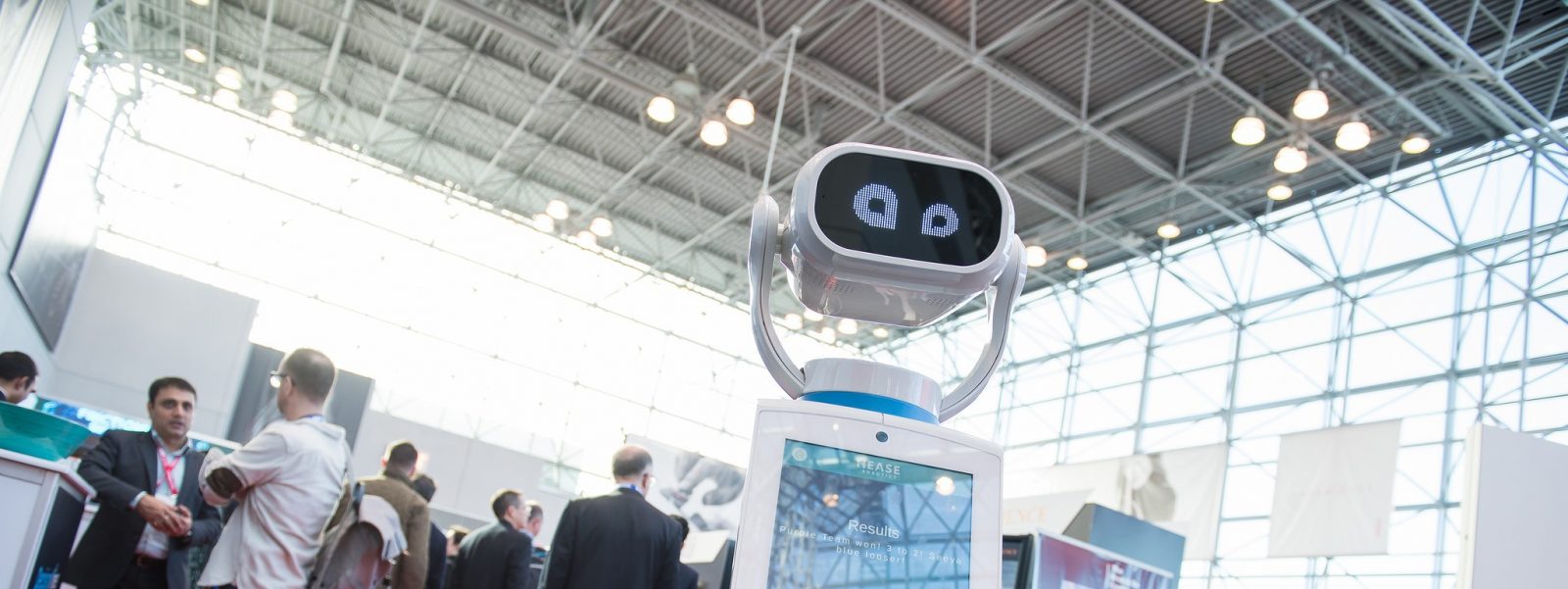NRF 2019: A Review of This Year’s Most Innovative Technologies
I attended this year’s NRF show in New York and came away a new level of appreciation for the amount of innovation occurring within the retail industry. I joined 40,000 other attendees and spent three days walking three levels of the Javits Center, and I was impressed with some of the breakthrough technologies that I believe will help support industry transformation as retailers seek to differentiate through better products and better internal capabilities.
- Robotics and drones
- Omnichannel solutions, including Buy Online Pickup In-Store (BOPIS)
- Data analytics, including shopper and product tracking, targeting and personalization tools
- Cashier-less or contactless shopping and stores
- AI and machine learning
- AR and VR
- Digitizing the retail shelf
- Internet of Things (IoT)
- Blockchain
I found myself returning several times to the top level’s Startup Zone + NRF Innovation Lab areas where many of the most innovative companies were on display. Here are a few that I met and found particularly interesting.
MYSIZEDID
While many of the digital fit offers involve sophisticated machines and fitting tools, MYSIZEDID uses patented technology and unique algorithms to capture a person’s measurements using smartphone sensors, without the need to use a camera. Knowing your size with more certainty lowers returns and this technique allows shoppers to easily update their sizes as their measurements change.
SUNDAR
With its origins at the Massachusetts Institute of Technology (MIT), SUNDAR is building what they refer to as the world’s largest discovery and sourcing platform. The technology connects fashion brands with manufacturers and suppliers of textiles, trims, components and specialist services, enabling in minutes what used to take weeks and months to accomplish. Their platform operates in real time to streamline discovery, sampling and sourcing, and its tools improve collaboration between material research, design and production teams.
Perfitly
Where was this site the last time my wife ordered three of an item knowing two would be returned because only one would fit? This site allows shoppers to upload a digital avatar of their bodies in their size and proportion after filling out a simple form. Then, they can try on garments, zoom and rotate and see how various sizes will fit them (are they snug, loose, how does the fabric drape, etc.). Then they can select the exact size that looks best on them before ordering. Perfitly is aimed at reducing the billions of dollars spent by apparel and footwear retailers and brands processing returns each year.
Rohvi
This recommerce platform offers higher end retailers a turnkey way to free up their customers’ closet space for new items from their stores. Rohvi sends custom emails to a retailer’s customers around 6-24 months after purchase, offering to buy back the item for a set dollar amount of in-store credit. The shopper mails the item back and buys a new item with her store credit. Rohvi then recycles, resells or otherwise disposes of the returned item.
Pick 'n' Watch™
This company creates an instore WOW factor using a digital screen on a merchandise display. When a shopper touches or lifts a product from the shelf, a video appears on the screen to explain the product’s attributes, benefits, uses, special pricing offers, etc. Coupled with a real time analytics dashboard, this allows the retailer and brand to do A/B testing of targeted images and messages, and view shoppers’ touch analytics by region, store, product, date and time while driving increased shopper engagement, conversion rates and sales.
ThreeKit
This 3D product configuration and visualization platform gives shoppers more interactive and personalized e-commerce experiences. With its roots in the movie industry, ThreeKit’s mission is to give brands the ability to differentiate their customer experiences through next-generation 3D product visualization, virtual photography and augmented reality (AR). Replacing the old, static, 2D photos on websites, ThreeKit dramatically increases conversion rates and lowers return rates by providing 3D product visualization, giving shoppers fully interactive item models complete with interchangeable, user-selected customization options.
EON
With an RFID thread that withstands hundreds of washings, EON uses the Internet of Things (IoT) to give retailers total supply chain visibility and promote sustainable lifecycle management of a garment throughout its life. Breaking the cycle of making, selling and disposing of garments in landfills, EON’s goal is to track the garment to the end of its useful life and support the resell, repair, or recycle decision at that time. And, garment ID tracking provides the material content information needed for effective recycling.
FINDMINE
This platform leverages artificial intelligence (AI) to scale the art of wardrobing a shopper. Store or brand design experts may spend a lot of time and effort creating cohesive wardrobe and set of looks that incorporate a brand’s unique design. FINDMINE’s automated Complete the Look algorithm allows shoppers to see how to use each product and shows them complementary items to create an outfit or certain look. This decreases time and effort from merchants and product designers while increasing cross selling, units per transaction, shopper satisfaction and brand loyalty.
dor
Realizing retailers’ need for accurate store traffic counting, dor has developed a simple solution that installs in minutes without cameras, privacy-invading facial recognition or beacons. Their peel/stick/count technology installs over doors in minutes without Wi-Fi connectivity or hardwiring. Using a preconfigured proprietary thermal technology coupled with an analytics platform, dor can give retailers key metrics like traffic trends and conversion rates, and can help determine staff scheduling needs throughout the day.
Syte
With this next generation visual AI solution, shoppers upload a photo from their phone of the exact item or outfit they’d like to purchase and immediately receive all of the most visually similar options within a specific retailer’s inventory. Retailers get accurate deep textual tags from these uploaded images, listing attributes like a garment’s type, color, style, fabric, sleeve length, etc. This is certainly useful for private brand product developers to know what looks their shoppers most desire.
C2RO
This AI-driven customer recognition and behavior analysis platform provides retailers an easy to install facial recognition tool. New customers entering a store are profiled by gender and age range. This can allow merchandise display screens in the store to customize an offer as a shopper approaches the display based on their profile. Once a purchase is made, name and purchase history are available and can alert store employees when the shopper makes future visits. It can also alert store security of known shop lifting or high-risk suspects entering the store.
Mystore-E
This company aims to provide retail sales people in the store with an analysis and synthesis of all their available sales data in a real-time, supervised communication tool with insight and task suggestions to improve sales performance, conversion rates and margins. Tasks may include merchandise placement, merchandising techniques and selling strategies based on up-to-date information on what’s selling, trending, on sale, discontinued, last in stock, declining in sales, etc. Brands can also use this data to see what’s happening across their distribution network.
For years, whenever I’ve given presentations on the future of retail, I’ve suggested that what retailers need to succeed in the future is a CIO – Chief Innovation Officer – coupled with a research and development budget in order to stay ahead of the trends and competition. This year’s NRF convinced me that innovation is alive and well within our industry and many of the ideas, products, services, people and companies showcased at NRF will indeed be the forces behind successful retailing 5 and 10 years from now.

